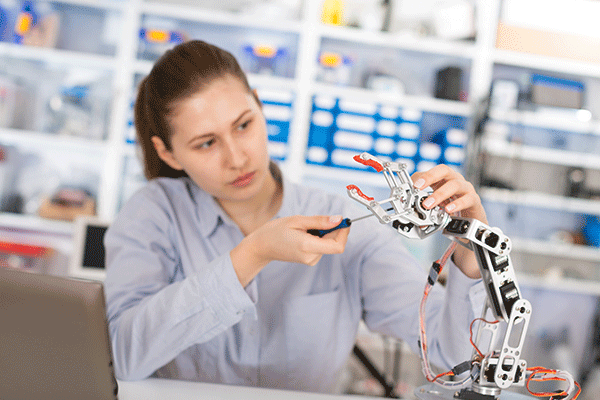 Every year, we celebrate International Women’s Day on March 8 as a way to commemorate the movement for women’s rights. This global holiday honors the social, economic, cultural, political – and in our case – scientific achievements of women.
Every year, we celebrate International Women’s Day on March 8 as a way to commemorate the movement for women’s rights. This global holiday honors the social, economic, cultural, political – and in our case – scientific achievements of women.
Additionally, International Women’s Day also marks a call to action for accelerating gender parity. Currently, women remain underrepresented in the STEM workforce, although to a lesser degree than the past. According to the National Science Foundation, the greatest gender disparities still exist in the fields of engineering, computer science, and physical science.
In the U.S., women make up half of the entire workforce, but only 29 percent of the science and engineering field. While the gender gap may still exist for women in STEM, many phenomenal female scientists have entered the field over the years and left an indelible mark on the science.
Take Nettie Stevens (born 1861), the foremost researcher in sex determination, whose work was initially rejected because of her sex. Or Mary Engle Pennington (born 1872), an American chemist at the turn of the 20th century, pioneering research that allows us to process, store, and ship food safely. Barbara McClintock (born 1902) was deemed crazy when she suggested that genes jump from chromosome to chromosome. Of course, she was later awarded the Nobel Prize in Physiology or Medicine for her discovery of genetic transportation.


 As millions of students of all ages return to school this fall, they are making important choices that have a strong influence on their eventual career path – which college majors to pursue, which high school classes to take, even which elementary school extracurricular activities to join. Many of them – especially women, girls and members of minority groups – make choices that lead them away from professions in the fields of science, technology, engineering and mathematics (STEM).
As millions of students of all ages return to school this fall, they are making important choices that have a strong influence on their eventual career path – which college majors to pursue, which high school classes to take, even which elementary school extracurricular activities to join. Many of them – especially women, girls and members of minority groups – make choices that lead them away from professions in the fields of science, technology, engineering and mathematics (STEM).

 Cards Against Humanity, the comedy card game, has announced that applications are now being accepted for their
Cards Against Humanity, the comedy card game, has announced that applications are now being accepted for their  Just over 45 years ago today,
Just over 45 years ago today,  Prior to the turn of the 20th century, society pondered a question that baffled people for millennia: What drives the sex of a baby? What makes a boy a boy? What makes a girl a girl?
Prior to the turn of the 20th century, society pondered a question that baffled people for millennia: What drives the sex of a baby? What makes a boy a boy? What makes a girl a girl?